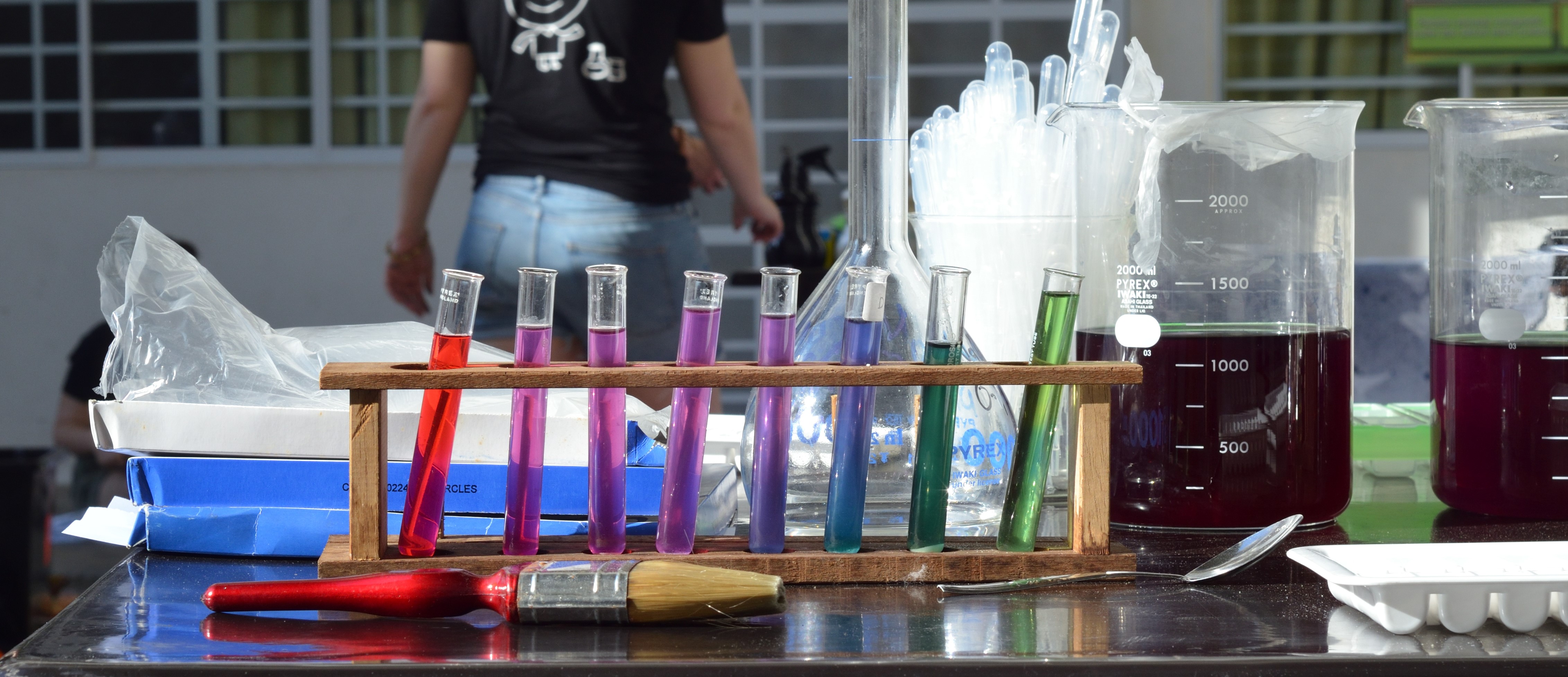There are a variety of plants that can be used as pH indicators but one of the easiest to find with the widest range of colours is red cabbage. One school we work with have planted a garden with red/purple plants and flowers for the kids to test.
We use it to introduce the concept of acids and bases and where they fit on a scale. It’s also a good introduction into why scientists use numbers eg pH numbers rather than colours (ask a class to point something that is red in the classroom and you’ll see what I mean).
We usually use a set of buffers to create the cabbage pH range:
Citrate buffer
3.0 pH:
Sodium citrate (100 mg , 0.35 mmol) + citric acid (977 mg, 4.65 mmol)
4.0 pH:
Sodium citrate (500 mg, 1.7 mmol) + citric acid (693 mg, 3.3 mmol)
5.0 pH:
Sodium citrate (867 mg, 2.95 mmol) + citric acid (431 mg, 2.05 mmol)
6.0 pH:
Sodium citrate (1.22 g, 4.15 mmol) + citric acid (200 mg, 0.95 mmol)
Sodium phosphate buffer
7.0 pH:
Disodium phosphate (1.73 g, 12.2 mmol) + sodium dihydrogen phosphate (1.08 g, 7.8 mmol)
8.0 pH:
Disodium phosphate (2.69 g, 18.9 mmol) + sodium dihydrogen phosphate (146.2 mg, 1.06 mmol)
Bicarbonate-carbonate buffer
9.0 pH:
Sodium carbonate (212 mg, 2.0 mmol) + sodium bicarbonate (672 mg, 8.0 mmol)
10 pH:
Sodium carbonate (742 mg, 7.0 mmol) + sodium bicarbonate (252 mg, 3.0 mmol) –



Recent comments